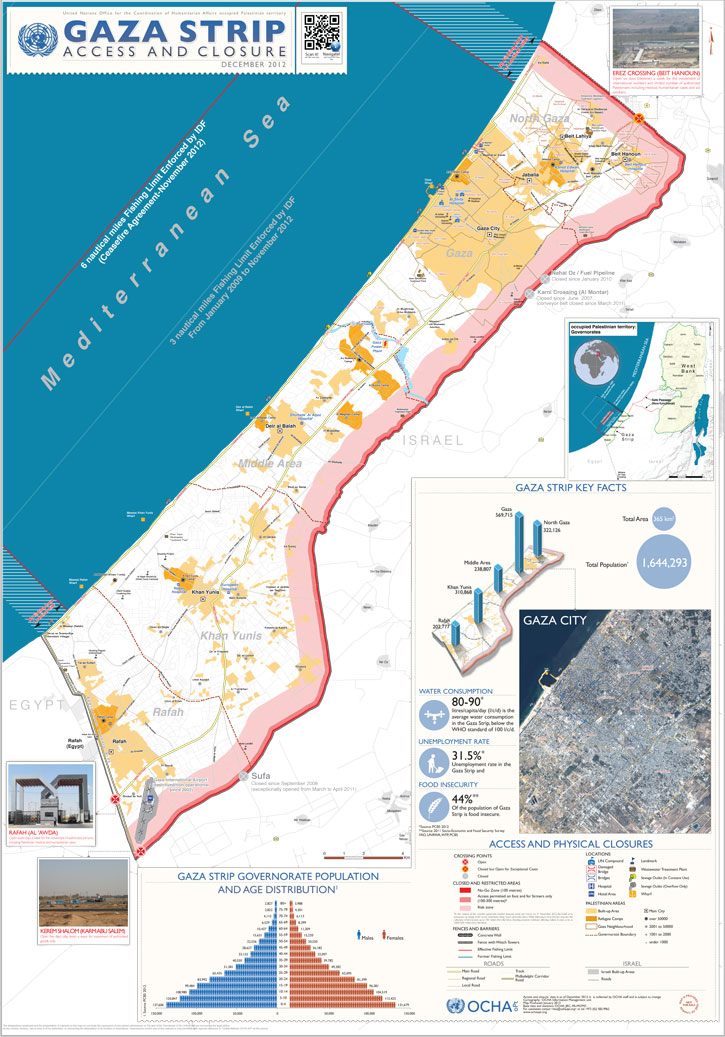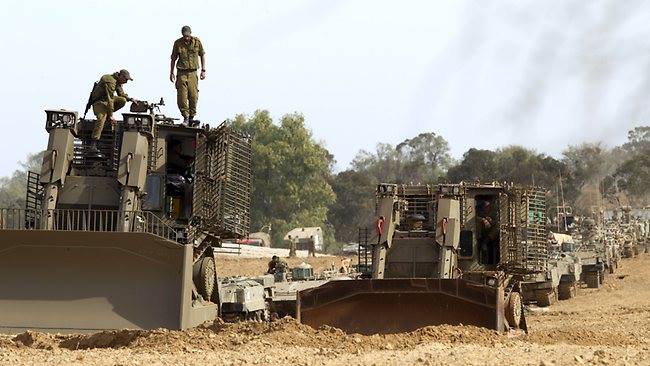
The operation came after 10 days of intense fighting between Israel and the Islamic militant Hamas, in which Israel hit more than 2,000 targets in Gaza and Hamas launched nearly 1,500 rockets at Israel.
The IDF has already called in 40,000 reservist soldiers and has increased its regular forces along the border with Gaza, with three elite infantry brigades, some are mounted on armored infantry fighting vehicles, along with Merkava main battle tanks. The forces are closely supported by artillery and heavy combat engineering units, that provide fire and mobility support for the troops. The Israeli government has approved calling 18,000 additional reservists to sustain the operation, if required.

This second phase of operation ‘Protective Edge’ is led by the IDF’s Southern Command. It employs close coordination between IDF units including infantry, armored corps, engineer corps, artillery, and intelligence combined with aerial and naval support. This effort is closely supported by the Israeli Security Agency (ISA) and other intelligence organizations.” the official announcement said.
According to IDF Spokesperson, the objective as defined by the Israeli government is “to establish a reality in which Israeli residents can live in safety and security without continues indiscriminate terror, while striking a significant blow to Hamas’ terror infrastructure.”
The campaign followed several days of preparations, in which the IDF instructed civilians to move out of certain areas north and north east of Gaza city, where the IDF identified extensive rockets launches over the past 10 days. Other areas of concern are in the eastern and southern border between Gaza and Israel, where Hamas has dug tunnels to circumvent and infiltrate and strike into Israel, creating an underground bypass the border fence and security measures Israel has constructed along the border fence. The IDF has warned Palestinian civilians in Rafah and Khan Yunis in the southern and central areas of the Gaza Strip.
Ground offensive: the first night
Since beginning of the ground phase of Operation Protective Edge July 17, five terror tunnels have been exposed by the IDF and are now under comprehensive investigation. Later today IDF spokesperson announced that the Givati Brigade operating in the Gaza Strip have thus far uncovered 13 tunnels exits that were used to smuggle weaponry and to execute terror attacks. The announcement did not specify the location where those tunnels were found.
Initial indication from the military activities overnight indicate relatively light Palestinian resistance, in line with IDF expectations. According to military reports 14 terrorists were killed in exchanges of fire. The Palestinians reported 17 killed. One Israeli soldier was killed by a sniper, and five additional soldiers were wounded, mostly from mortar fire. An anti-tank missile hit an IDF heavy bulldozer in the southern Gaza Strip, causing damage but no injuries were reported. Overall, IDF forces reportedly targeted 103 terror targets, exposed and destroyed about 20 concealed rocket launchers and struck nine tunnels.
Since the beginning of the of the ground phase of the operation, about 50 rockets were fired at Israel, 25 of which hit Israel and another 20 intercepted by the Iron Dome missile defense system.
Analysts have assessed the Israeli operation will be limited, since the Netanyahu government was reluctant to embark on the operation and on the land campaign since the beginning. However, a rolling campaign in Gaza could gather momentum as it unfolds, and could have unexpected results, depending on the Israeli actions and Palestinian response. Through the first ten days of the operation the Palestinians have used much of their ‘strategic effects’, firing rockets over 150 kilometers (doubling the range they have reached in previous campaigns). They also attempted to strike from the sea, and on land, through attack tunnels, both foiled by Israeli dominance in intelligence, persistent surveillance and employment of precision effects.
Hamas also employed its unmanned aerial vehicles (UAVs). Two were shot down by Israeli air-defense Patriot surface-to-air missile units. One was shot down on Tuesday, over the Mediterranean Sea near Ashdod and another shot down today, south of Ashkelon. The Palestinians also attempted to hit Israeli vehicles using anti-tank missiles.
Despite the Palestinian efforts to inflict casualties and havoc in Israel, the Israelis were prepared and were not surprised by any of these operations. Iron Dome demonstrated impressive success rates, effectively protecting Israel’s population centers from the rocket attacks, providing the civilians a sense of security despite the firing of more than 1,500 rockets from Gaza. It also bought time for the preparation for careful, measured execution of the aerial campaign, and of the planning and rehearsal of the ground offensive. Even the potentially ‘strategic’ strikes, launched through terror tunnels and underwater, were effectively repelled by the IDF, that proved its high level of prepardness and effective ‘terrain dominance’ capability, even at times of hightened operational tempo.
The underworld beneath Gaza
Hamas has invested immense efforts in digging, equipping and maintaining many tunnels dug under the border with Israel and in the area connecting the Palestinian and Egyptian areas of Rafah, those tunnels have provided the ‘military lifeline’ of the sieged Gaza strip, enabling the militant in the sieged Gaza strip to bring in military support smuggled through the loosly controlled Sinai desert. In recent weeks the Egyptian military has closed or destroyed most, if not all of those tunnels, leaving the militants in Gaza without a dependable military support.
According to Israel’s intelligence, terror tunnels are spread throughout the Gaza Strip, forming an ‘underworld’ beneath the populated areas. The majority of those tunnels are constructed and utilized by Hamas. The tunnel network is highly developed and continuously preserved interconnecting launch sites, rocket maintenance and command and control positions. Offensive tunnels are complex and advanced, crossing the border from Gaza to Israel, with an agenda to enable terrorists to infiltrate into Israel. Such tunnels, with openings within Israeli territory are intended to carry out attacks such as abductions of Israelis, attacks on military and civilian communities as well as infiltration into Israel, as part of covert terror activity.
What’s next?
The Israeli ground campaign could have several goals – at present the limited goal – to ‘clean’ the area along the fence and deal with those tunnels – is endorsed by the official speakers, but that may be only the first step. A deeper move, few kilometers into the Gaza strip, could aim to take over the main rocket launch areas, destroying underground rocket launchers, stockpiles, support facilities and command and control sites. Such activities have already taken place in some areas, a naval commando team operating north of Gaza was spotted by the enemy at such a site earlier this week. Four commandos were wounded in that operation.
Another more comprehensive option, one the Hamas is fearing the most, is a deeper thrust into the city of Gaza, and the other regional centers in the south and center – in an effort to defeat the command structure of Hamas, hiding underground in locations shielded by civil facilities (hospitals etc) that Israel cannot attack from the air. In January 2009 during operation Cast Lead, Israel avoided to enter the city of Gaza, and opted to stop its forces few hundreds of meters from these objectives.











